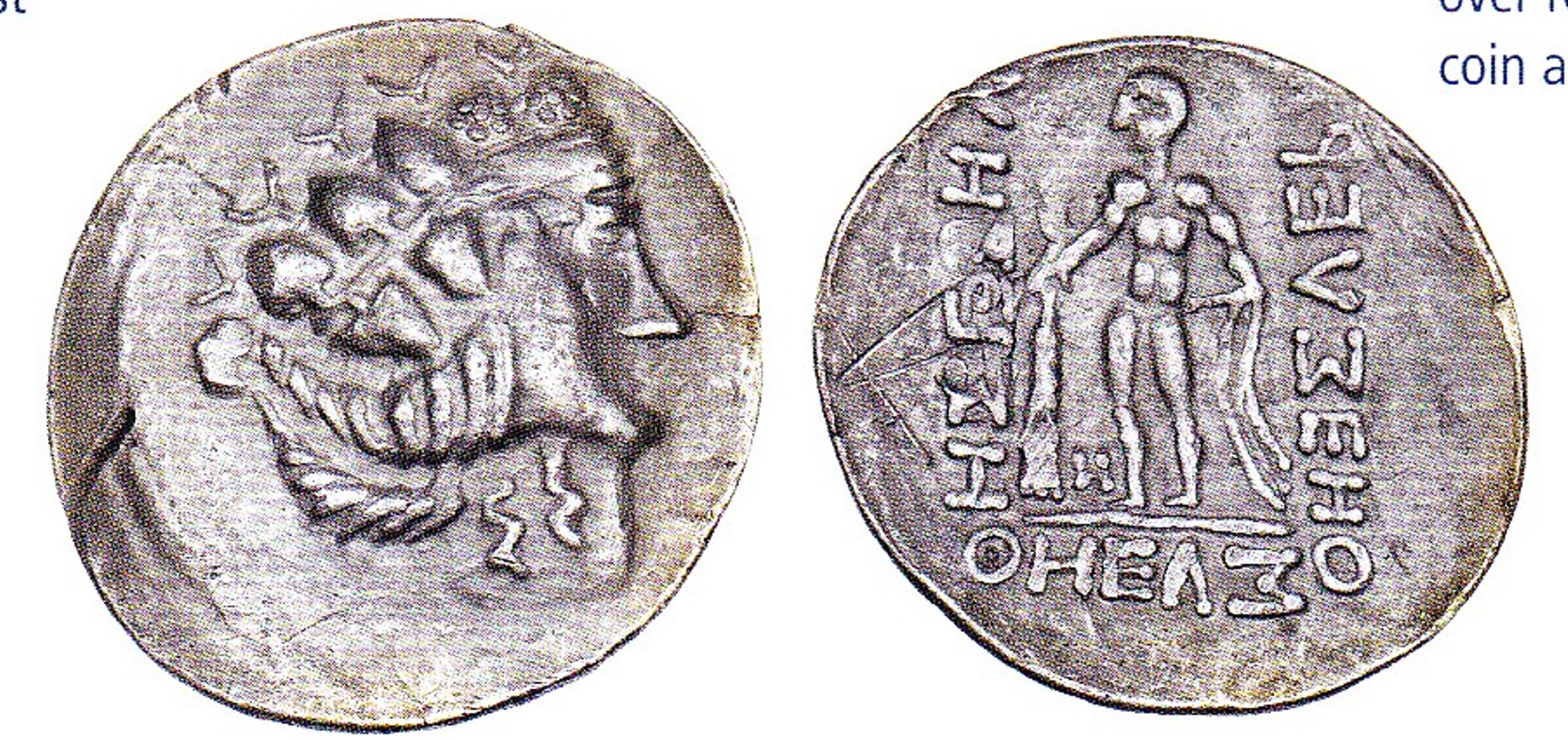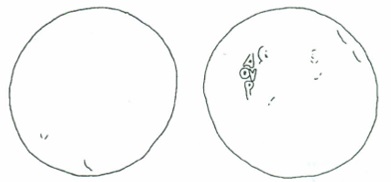60 BCE - 40 BCE | PEΛΣΕΗΟΘΗΕΛΣΗΣEPΗΛ ? (sic)
Overstriking coin
Thasos_over_Athens_MacDonald_106.jpg
Overstruck variety
2296 - Thasos (tetradrachm) over Athens 126-125 BCE (MacDonald 2009, 104) overstruck variety.jpg

Thasos_over_Athens_MacDonald_106_drawing.jpg
Description
| ObverseInscription or printing placed on the obverse.:
|
Head of youthful Dionysos to right, wearing ivy wreath.
|
ReverseInscription or printing placed on the reverse.:
|
PEΛΣΕΗΟΘΗΕΛΣΗΣEPΗΛ ? (sic) Herakles facing, head left, holding club and lion skin. In field, monogram.
|
Mint and issuing power
| MintIdentifies the place of manufacture or issue of a numismatic object.:
|
Thasos
|
Ancient regionAncient region.
|
Thrace
|
Modern countryModern country: Greece
|
AuthorityIdentifies the issuing power. The authority can be "pretended" when the name or the portrait of X is on the coin but he/she was not the issuing power. It can also be "uncertain" when there is no mention of X on the coin but he/she was the issuing power according to the historical sources:
|
Roman Republic
|
Chronology
| FromIdentifies the initial date in a range assigned in a numismatic context. 60 BCE toIdentifies the final date in a range assigned in a numismatic context.. 40 BCE
|
Hellenistic 323-30 BC  periodTime period of the numismatic object. periodTime period of the numismatic object.
|
Physical description
MetalThe physical material (usually metal) from which an object is made.: Silver 
|
WeightWeight of the numismatic object (in grams). in grams: 16.2616.26 g <br />16,260 mg <br />
|
DenominationTerm indicating the value of a numismatic object. Examples: tetradrachm, chalkous, denarius.: tetradrachm 
|
AxisDescribes the directional relationship between the obverse and reverse of a numismatic object.: 11 mm <br />0.1 cm <br />
|
|
|
StandardStandard.: Attic
|
References
| Coin referenceReference of the Coin:
|
MacDonald 2003, p. 31-39, n° 3, MacDonald 2009, p. 143, n° 106
|
Coin series referenceReference to coin series study:
|
MacDonald 20031MacDonald 2003, p. 31-39, n° 3, Prokopov 20062Prokopov 2006, MacDonald 20093MacDonald 2009, p. 143, n° 106, HGC 64HGC 6, n° 359
|
Description
| ObverseInscription or printing placed on the obverse.:
|
Head of Athena right, wearing helmet.
|
ReverseInscription or printing placed on the reverse.:
|
ΑΘΕ (Greek) Owl standing on amphora. In field, ΕΠΙΓΕΝΗΣ-ΣΩΣΑΝΔΡΟΣ
|
Mint and issuing power
| MintIdentifies the place of manufacture or issue of a numismatic object. ᵖ:
|
Athens
|
Ancient regionAncient region. ᵖ
|
Attica
|
Modern countryModern country: Greece
|
AuthorityIdentifies the authority in whose name (explicitly or implicitly) a numismatic object was issued. ᵖ:
|
|
Chronology
| FromIdentifies the initial date in a range assigned in a numismatic context. 126 BCE toIdentifies the final date in a range assigned in a numismatic context.. 125 BCE
|
Hellenistic 323-30 BC  periodTime period of the numismatic object. periodTime period of the numismatic object.
|
Physical description
| DenominationTerm indicating the value of a numismatic object. Examples: tetradrachm, chalkous, denarius. ᵖ:
|
tetradrachm 
|
StandardStandard. ᵖ:
|
Attic
|
References


